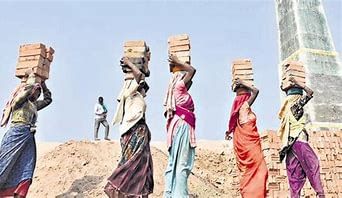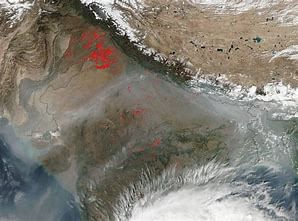UPSC Daily Current Affairs- 25th November 2023 | Current Affairs & Hindu Analysis: Daily, Weekly & Monthly PDF Download
GS-II
Ayurveda Gyan Naipunya Initiative (AGNI)
Subject: Governance

Why in News?
The Central Council for Research in Ayurveda Sciences (CCRAS), under the Ministry of Ayush, has introduced the “Ayurveda Gyan Naipunya Initiative” (AGNI) to promote research and innovation among Ayurveda practitioners.
Ayurveda Gyan Naipunya Initiative
- AGNI aims to document and validate Ayurvedic medical practices, enhance evidence-based practice culture, and facilitate scientific research in the field.
- It provides a platform for Ayurveda practitioners to share their innovative practices, fostering an evidence-based culture.
- It also supports research to validate pragmatic Ayurvedic practices through scientific methods.
Key functions
- CCRAS will document and publish reported medical practices and therapeutic regimens for educational and academic purposes in consultation with the National Commission for Indian System of Medicine (NCISM).
- AGNI provides a platform for Ayurveda practitioners to report their innovative practices and experiences across various disease conditions.
- The initiative encourages the culture of evidence-based practice among Ayurveda practitioners, ensuring that their methods are grounded in scientific research.
- AGNI seeks to identify interested Ayurveda practitioners willing to collaborate in creating a comprehensive database through applications.
- Capacity building through research methods and good clinical practice training will also be offered.
- AGNI will undertake research to mainstream pragmatic Ayurvedic practices through scientific validation and evidence-based appraisal.
Source: The Hindu
GS-III
The Forgotten Citizens: Hardships Faced by Migrant Workers in India
Subject: Economy

Why in News?
On the 12th of November, a landslide in Uttarkashi district, Uttarakhand, led to the collapse of the Silkyara tunnel, which was under construction. Regrettably, 41 workers are still trapped, marking the 14th day of the rescue operation.
- Celebratory Monuments: In a nation emphasizing its success through statues, stadiums, and celebrity hagiographies, the foundational elements often escape notice.
- Overlooked Backbone: The crucial contributors to the nation's infrastructure, migrant workers, go unnoticed amidst the grandeur of iconic structures.
- Human Infrastructure: Migrant workers, responsible for constructing tunnels, highways, etc., operate on the fringes of national consciousness.
- Eclipsed Struggles: Despite their integral role, the challenges faced by migrant workers are overshadowed by the splendor of the structures they actively participate in creating.
Strands of Internal Migration in India
Diverse Internal Migration Strands: Internal migration in India is multifaceted, encompassing long and short distances, rural-to-urban shifts, rural-to-rural movements, intra and interstate transitions, as well as intra and inter-district relocations. Circular and seasonal migration patterns also contribute to this complex landscape.
Significant Participation Rates: Data reveals that a substantial portion, ranging from 35 to 40 percent, of the Indian population engages in internal migration, highlighting the pervasive nature of this phenomenon.
Interstate Migration Dynamics: Particularly in interstate migration, there is a discernible trend of individuals relocating from economically challenged states like Bihar, UP, and Jharkhand to more affluent and industrialized regions.
Informal Sector Dominance: The prevalence of low formal sector employment, approximately 22 percent according to the Periodic Labour Force Survey (2021-2022), underscores the characteristic nature of itinerant labor within Indian society. Roaming labor, as a result, becomes a defining aspect of the country's labor dynamics.
Major Reasons Behind the Migration
- Unpredictable Agriculture Production:
- Challenge for Migrant Workers: The uncertainty in agriculture production systems is a major challenge for migrant workers, pushing them into circular migration as they move seasonally in pursuit of livelihoods.
- Impact on Seasons: The seasons, traditionally celebrated, become precarious for these mobile workers due to the unpredictability in agricultural output.
- Scale and Complexity of Intra-National Migration:
- Sheer Magnitude: Intra-national migration in India involves staggering numbers of participants, spanning various types such as rural to urban, intra or inter-district, and circular and seasonal migrations.
- Pursuit of Economic Opportunities: Hundreds of millions traverse boundaries in search of economic opportunities, navigating a landscape marked by both hope and distress.
- Plight of Migrant Workers:
- Outsiders in Host Societies: Migrant workers, seeking livelihoods across boundaries, often face the stigma of being perpetual outsiders in their host societies.
- Tragedy of Anonymity: Despite being the driving force behind national infrastructure, migrant workers are frequently depicted in tragic events, highlighting a disconnection between their contributions and recognition.
- Policy Void: Existing policies, notably the Interstate Migrant Workmen Act, 1979, lack comprehensive provisions for housing, healthcare, minimum wages, and protection against discrimination, leaving the migrant workforce unprotected.
- Dehumanizing Treatment: Migrant workers are often treated as mere job machines, with little consideration for their humanity, leading to a lack of support for their unique challenges.
- Challenges in Urban Settings:
- Lack of Legal Protection: Migrant workers not only lack legal protections but also face hostility in urban environments where their contributions are crucial.
- Inadequate Support: Cities relying on migrant labor for infrastructure development often lack basic support for the human needs of these workers, including healthcare, financial assistance, decent housing, safety measures, and childcare facilities.
- Generational Disadvantage:
- Education Denied: Children of migrant workers in urban areas face educational disadvantages, perpetuating a cycle of hardship as lack of opportunities hinders their ability to overcome challenges faced by their parents.
- Healthcare Challenges:
- End of Working Life: Injuries sustained by migrant workers often signal the end of their working lives, as they lack adequate support or access to medical facilities in urban settings.
- Compelled Return: Injured workers are compelled to return to their homeplaces for healthcare, as urban settings offer limited and delayed access to necessary medical facilities.
- Misery in Seasonal Migration:
- Abysmal Urban Housing: Seasonal migration from villages to urban areas exacerbates challenges, with poor urban housing conditions adding to the misery faced by migrant workers.
- Thoughtful Urban Planning:
- Comprehensive Solutions Needed: The challenges faced by migrant workers extend beyond their workplace, necessitating urgent attention and comprehensive solutions.
- Holistic Approach: Thoughtful urban planning should go beyond providing employment, addressing the entire spectrum of migrant workers' lives, including aspects such as dignity, education, and healthcare.
- Tailored Policies:
- Educational and Healthcare Support: Policies must address the neglect of educational opportunities for children, lack of support for injured workers, and inhospitable urban housing conditions.
- Silkyara Tunnel Incident: Specific incidents, like the Silkyara tunnel tragedy, highlight the need for targeted policies that recognize and respond to the unique challenges faced by migrant workers.
- Understanding Unique Needs: Rather than merely celebrating diversity, there should be a deliberate effort to understand and cater to the distinct needs of migrant workers, departing from a one-size-fits-all approach.
Conclusion:
- Beyond Symbolic Acts: The Silkyara tunnel incident serves as a stark reminder for policymakers to delve into the profound challenges faced by migrant workers, urging a move beyond symbolic acts and media attention.
- Societal Responsibility: To genuinely care for the well-being of mobile workers, society must carefully examine their lives and advocate for policies that alleviate their challenges.
- Nation's Greatness: A nation can only aspire for true greatness by addressing the silent difficulties of progress borne by those who often go unnoticed in the pursuit of development.
Source: The Hindu
Why a NASA Spacecraft Fired a Laser at Earth
Subject: Science and Technology

Why in News?
NASA’s Psyche spacecraft, currently over 16 million kilometres away in space, successfully fired a laser signal at Earth (on Nov 14).
- The spacecraft is on its way to a unique metal-rich asteroid (16 Psyche), orbiting the Sun between Mars and Jupiter.
What is NASA’s Psyche Spacecraft?
- Psyche is a National Aeronautics and Space Administration (NASA) space mission launched in 2023 to explore the origin of planetary cores by orbiting and studying the metallic asteroid 16 Psyche beginning in 2029.
- Asteroid 16 Psyche is the heaviest known M-type asteroid [appear to contain higher concentrations of metal phases (e.g., iron-nickel)] orbiting the Sun between Mars and Jupiter.
- It may be an exposed iron core of a protoplanet (thought to be developing into a planet), the remnant of a violent collision with another object that stripped off its mantle and crust.
- Psyche uses solar-powered hall effect thrusters for propulsion and orbital manoeuvring, the first interplanetary spacecraft to use that technology.
- It's also the first mission to use laser optical communications beyond the Earth-Moon system.
- NASA's Jet Propulsion Laboratory (JPL) manages the project. The spacecraft will not land on the asteroid, but will orbit it from August 2029 through late 2031.
- Psyche could provide unique insights into the impenetrable iron core of planet earth.
Space Communication and Associated Problem:
- Currently, most space communication is carried out using radio waves because of their desirable propagation properties, stemming from their large wavelength.
- What this means is that they have the ability to pass through the atmosphere regardless of weather, pass through foliage and most building materials, as well as bend around obstructions.
- Shorter wavelengths tend to scatter when in contact with any interference.
- Like wireless communications on Earth, spacecraft encode data on various bands of electromagnetic frequencies.
- Higher bandwidths (range of frequencies) carry more data per second.
- Thus, scientists would ideally like to transmit data at the highest bandwidths possible to increase the rates of data transfer.
- Communicating with spacecraft far away from Earth poses many challenges, of which the problem of data rates (vast amounts of data transmitted by spacecraft, while moving at rapid speeds) might be the most critical.
NASA’s Revolutionary New Technology:
- NASA's Deep Space Optical Communications (DSOC) experiment demonstrated the use of near-infrared laser signals for communication with spacecraft.
- Much like fibre optics replacing old telephone lines on Earth, NASA says that DSOC will allow data rates at least 10 times higher than state-of-the-art radio telecommunications systems of comparable size and power.
- This enables higher resolution images, larger volumes of science data, and even streaming video.
- The Psyche spacecraft is the first to carry a DSOC transceiver, and will be testing high-bandwidth optical communications to Earth during the first two years of the spacecraft’s journey to the main asteroid belt.
- The tech demo achieved “first light” (on Nov 14) after this transceiver locked onto a powerful uplink laser beacon.
Significance of the New Technology:
- DSOC is taking optical communications into deep space, paving the way for high-bandwidth communications far beyond the Moon and over 1,000 times farther than any optical communications test to date.
- This paves the way toward higher-data-rate communications capable of sending scientific information, high-definition imagery, and streaming video in support of humanity’s next giant leap: sending humans to Mars.
Source: Indian Express
Global Digital Public Infrastructure
Subject: Economy

Why in News?
Prime Minister announced the launch of two India-led initiatives: the Global Digital Public Infrastructure Repository and a Social Impact Fund.
What is Global Digital Public Infrastructure (DPI)?
- DPI is described as a set of shared digital systems that should be secure and interoperable, and can be built on open standards and specifications.
- These are used to deliver and provide equitable access to public and / or private services at societal scale.
Components of DPI
- Technology: This comprises digital systems and applications (e.g., software codes, building blocks, protocols, standards) that are interoperable.
- Governance: Governance facilitates user adoption at scale by establishing trust in DPI.
- Governance frameworks may include rules of engagement governing stakeholder behavior, cross-cutting and domain specific norms, laws and policies, and governance embedded into digital technologies.
- Community: Vibrant and inclusive community participation can enable value creation.
- This also comprises private sector and civil society actors who can collaborate to unleash innovation and unlock value.
Foundational Digital Public Infrastructure
- Identification: The ability for people and businesses to securely verify their identity, as well as complementary trust services such as electronic signatures and verifiable credentials.
- Payments: Easy and instant transfer of money between people, businesses, and governments
- Data sharing with consent wherever applicable: Seamless flow of personal data with consent, with safeguards for personal data protection.
Global DPI Repository (GDPIR)
- GDPIR is an initiative of the Indian G20 Presidency.
- Aim: It is aimed at promoting the development of Social Impact Fund to advance Digital Public Infrastructure (DPI) in the Global South.
- The MeitY has developed it as a comprehensive resource hub, pooling essential lessons and expertise from G20 members and guest nations.
- It will bridge the knowledge gap in the choices and methodologies required for the design, construction, deployment, and governance of DPIs.
- Currently, the GDPIR features 54 DPIs from 16 countries.
Social Impact Fund (SIF)
- The SIF is envisioned as a government led, multistakeholder initiative to fast-track DPI implementation in the global south.
- This fund will offer financial support to provide upstream technical and non-technical assistance to countries in developing DPI systems.
- The SIF offers a platform for all relevant stakeholders, including other governments, international organizations, and philanthropic entities, to contribute to this fund and help accelerate the achievement of the Sustainable Development Goals (SDGs) in Low- and Middle-Income Countries (LMICs) through DPIs.
- India has pledged an initial commitment of 25 million USD towards the fund.
Source: PIB
How Satellite Data monitors Farm Fires in Northern India?
Subject: Science and Technology

Why in News?
Farm fires, particularly paddy crop residue fires, contribute to air pollution in northern India. To monitor and address this issue, satellite data is utilized.
CREAMS Laboratory: Monitoring farm fires
- Agency: The Indian Agricultural Research Institute’s (IARI) Consortium for Research on Agro-ecosystem Monitoring and Modeling from Space (CREAMS) Laboratory is responsible for collecting and disseminating daily bulletins on paddy residue fires.
- Coverage: Data covers Punjab, Haryana, Uttar Pradesh, Rajasthan, Madhya Pradesh, and Delhi.
- Information Provided: The bulletin includes district-wise fire incident numbers, comparative data from previous years, location, satellite details, time, and fire intensity.
Satellite Data Collection
- Satellites: Three NASA satellites (VIIRS on Suomi NPP, MODIS on Terra and Aqua) capture data by recording land surface temperatures.
- Coverage: These satellites pass over the Indian subcontinent twice daily, with varying times.
- Resolution: VIIRS offers higher resolution, while MODIS has coarser resolution.
- Data Use: Satellite data is used to differentiate farm fires from other types, such as forest fires or industrial fires.
Monitoring Protocols
- Standardization: In 2021, a standard protocol for monitoring farm fires using satellite data was established.
- Data Comparison: Comparative data is available from 2020 onwards.
- Punjab’s Data: The Punjab Remote Sensing Centre provides similar data specific to Punjab.
Identifying Paddy Fires
- Reflectance Signature: Paddy crop residue fires are distinguished based on the unique reflectance signature of paddy fields.
- Land Surface Temperature: Active fires are identified based on land surface temperature deviations from surrounding areas.
- Fire Intensity: Intensity, expressed as energy emitted per unit area per unit time, indicates the amount of residue burned.
Bulletin Dissemination
- Recipient Agencies: Bulletins are sent to central and state-level agencies, including the Commission for Air Quality Management, the Ministry of Agriculture, and state agriculture departments.
- Action Measures: Authorities use the data to identify hotspots and plan measures, such as machinery availability, to address farm fires.
- Targets: Some states, like Punjab and Haryana, set targets for reducing farm fire incidents based on satellite data.
Source: The Hindu
Farlowichnus rapidus
Subject: Science and Technology

Why in News?
Recently, Brazil's geological service announced a new species of dinosaur, Farlowichnus rapidus, that lived in the desert during the early Cretaceous period.
About Farlowichnus rapidus:
- The new species of dinosaur was a small carnivorous animal about the size of a modern-day seriema bird, or about 60-90 cm (2-3 feet) tall.
- It was a very fast reptile that ran across the ancient dunes.
- The fossilized dinosaur "trackways", were first found in the 1980s by Italian priest and palaeontologist Giuseppe Leonardi
- It lived during the early Cretaceous period.
What is the Cretaceous Period?
- In geologic time, it is the last of the three periods of the Mesozoic Era.
- It began 145.0 million years ago and ended 66 million years ago; it followed the Jurassic Period and was succeeded by the Paleogene Period (the first of the two periods into which the Tertiary Period was divided).
- The Cretaceous is the longest period of the Phanerozoic Eon.
- The Cretaceous Period began with Earth’s land assembled essentially into two continents, Laurasia in the north and Gondwana in the south.
- These were almost completely separated by the equatorial Tethys seaway, and the various segments of Laurasia and Gondwana had already started to rift apart.
Source: The Hindu
Exercise SURYA KIRAN
Subject: Defence and Security
Why in News?
The 17th edition of Joint Military Exercise SURYA KIRAN will be conducted in Pithoragarh, Uttarakhand, from November 24th to December 7th, 2023.
About Exercise SURYA KIRAN:
- It is a joint military exercise between the Indian army and the Nepali army.
- It is an annual event and is conducted alternately in the two countries.
- The Indian Army contingent, comprising 354 personnel, is being led by a battalion from the Kumaon Regiment. The Nepal Army contingent is represented by the Tara Dal Battalion.
- The aim of the exercise is to enhance interoperability in jungle warfare, counter-terrorism operations in mountainous terrain, humanitarian assistance, and disaster relief under the United Nations Charter on peacekeeping operations.
- The exercise will focus on the employment of drones and counter-drone measures, medical training, aviation aspects and environment conservation.
- The exercise will provide a platform for soldiers from India and Nepal to exchange ideas and experiences, share best practises, and foster a deeper understanding of each other’s operational procedures.
- This exercise signifies the strong bonds of friendship, trust, and common cultural linkages that exist between India and Nepal.
- It sets the stage for a productive and fruitful engagement, showcasing the unwavering commitment of both nations towards broader defence cooperation.
Source: PIB
|
38 videos|5293 docs|1118 tests
|
















